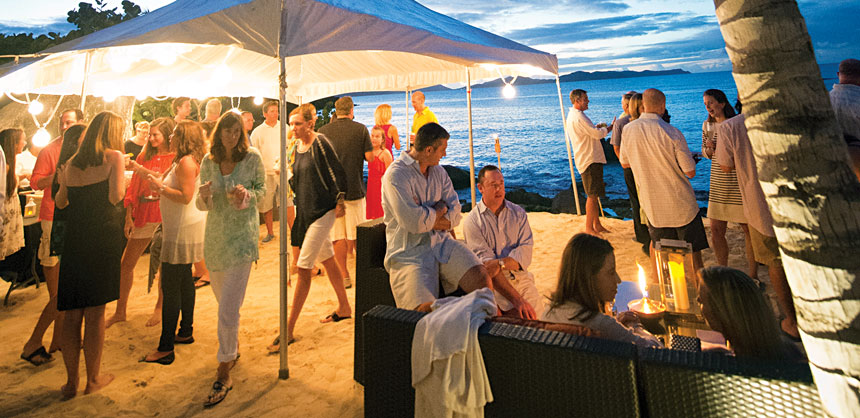What Incentive Winners Want Most From HotelsNovember 1, 2013
Above All, an Experience That Makes Them Feel Special By Patrick SimmsWhat Incentive Winners Want Most From Hotels
Above All, an Experience That Makes Them Feel Special
TD Ameritrade’s President’s Club meeting at Little Dix Bay in the British Virgin Islands. Credit: Rainbow Visions Photography
Business travelers have a variety of expectations, or at least wishes, when it comes to hotels, everything from ergonomic desks to free Wi-Fi to digital safes to lobby kiosks that provide airport check-in. But incentive travelers aren’t just looking for a pleasant, convenient lodging experience. They want a hotel or resort that is part of the reward for making their sales quota over a long, challenging qualifying period. That means luxurious amenities and, ideally, something that catches their eye after a career of upscale trips to many corners of the world.
“Generally these folks have been all over the world because they do these trips often, and many of them go on our competitors’ trips,” says Lisa Ramsay, CMP, director of meetings and incentives, life and annuity division, for Protective Life Insurance Company, Birmingham, AL. “The element of surprise may set us apart from our competitors to get them to come on our trip.”
Most recently, a Protective Life incentive group visited Coeur d’Alene Resort in Idaho, and many golfers among the group had a “surprising” encounter with the famed 14th hole, which lies on a made-made island, essentially a floating green.
Brand Loyalty
Unusual amenities and experiences help to make an incentive memorable, but in a different respect, recognizability and familiarity also can be desirable in a hotel. When insurance agents hear the name of a renowned independent property, such as The Broadmoor or The Greenbrier, or an elite brand name such as Ritz-Carlton or Four Seasons, they feel assured they will enjoy a lodging experience that is worth the effort to qualify. But since companies often have longstanding relationships with international hoteliers and thus enjoy negotiating leverage with them, economic considerations sometimes weigh in favor of the big-chain properties vs. independents as incentive locales. After all, incentive programs have rebounded since the recession, but unchecked spending has not.








